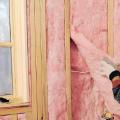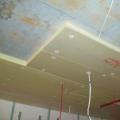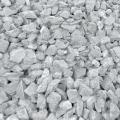How to choose a refractory mixture for stoves and prepare it
Conventional solutions are not designed to withstand temperature changes, as a result of which they crack and quickly crumble. The refractory mixture for furnaces is distinguished by its strength, resistance to high temperatures, and durability. A simple solution almost does not stick to the smooth surface of the oven and areas made of metal. Refractory mixtures, on the contrary, adhere perfectly to all surfaces and are convenient for working with stoves.
Types of plaster
Fireproof plaster for stoves and fireplaces is divided into two types: simple and complex. A simple one consists of two components; for example, for a Russian stove, clay and sand are usually used. Complex plaster consists of three ingredients, and sometimes more:
- asbestos, clay, sand;
- sand, clay, cement, asbestos;
- sand, fiberglass, lime, gypsum.
At high temperatures, asbestos begins to release toxic substances, for this reason it is replaced in fire-resistant solutions with fibrous reinforcing additives.
Properties of refractory mortars
To make it easier to understand why heat-resistant mixtures are used in the construction of stoves and fireplaces, you need to consider their properties:

Ready-made fire-resistant mixtures
Today, the building materials market surprises with the variety of fireproof products. The most popular of them, which have received many good reviews:
- There are three types of heat-resistant mixtures produced by this company:
- smooth;
- simulated;
- for tiled surfaces.
When using a modeled one, it is possible to obtain a textured surface on which any design can be applied. A smooth surface is perfect for painting the stove.
- "Terracotta". The dry mixture consists of clay and fine fireclay sand and fireproof additives. The solution is intended for ceramic and fireclay bricks and can withstand temperatures up to 200 ºC.
- "Stove maker." It includes:
- lime;
- sand;
- gypsum;
- asbestos;
- cement;
- clay;
- mineral supplements.
 The mixture can withstand temperatures up to 600 ºC. The only negative side is the asbestos included in the composition, which is not an environmentally friendly product.
The mixture can withstand temperatures up to 600 ºC. The only negative side is the asbestos included in the composition, which is not an environmentally friendly product.
- Plitonit-SuperFireplace FireUpor. This mixture consists of fire-resistant fibers and an adhesive base; it is resistant to high temperatures during the use of the oven and does not crack.
Ready-made dry mixtures are popular and, according to reviews about them, are practically free of drawbacks, but their cost is not cheap.
Preparing the mixture
If you want to save money on building a stove or fireplace, you can avoid purchasing expensive materials and prepare the solution yourself.
Simple mixture
A regular solution can be prepared from sifted sand, which must be moved with clay. After this, you need to add the required amount of water and alternating  eat until smooth. The proportions of sand and clay depend on the fat content of the second component. If the clay is oily, you need to add three parts of sand. To determine the fat content of the clay, place a small piece of it at the bottom of the bucket and fill it with water, continuously stirring until you get a homogeneous mass. Next, immerse any board in the resulting mixture. If the board is covered with a 1 mm layer of clay, it means it is non-greasy. A thicker layer suggests the opposite.
eat until smooth. The proportions of sand and clay depend on the fat content of the second component. If the clay is oily, you need to add three parts of sand. To determine the fat content of the clay, place a small piece of it at the bottom of the bucket and fill it with water, continuously stirring until you get a homogeneous mass. Next, immerse any board in the resulting mixture. If the board is covered with a 1 mm layer of clay, it means it is non-greasy. A thicker layer suggests the opposite.
Complex solution
Complex mixtures consist of different components, which are selected depending on which area of the fireplace they will be applied to. To make preparation easier, it is advisable to use a construction mixer.
Mixture No. 1. Composition:
- clay – 1 tsp;
- lime – 1 tsp;
- sand – 2 hours;
- reinforcing additives – 1/10 part.
To prepare the solution, you need to sift all the components and mix them dry. Next, add water and stir until smooth.
No. 2. Composition:
- clay – 1 tsp;
- sand – 2 hours;
- cement – 1 hour;
- reinforcing additive – 1/10 part.
To prepare, you also need to mix clay and sand, add water and stir until smooth. Then you need to add cement and add a reinforcing additive, add water and mix until a thick, homogeneous mass.
No. 3. Composition:
- gypsum – 1 hour;
- sand – 1 hour;
- lime – 2 hours;
- reinforcing additive – 2/10 parts.
After sifting the components, you need to mix dry lime, sand and reinforcing additive. Next you need  Next, pour the mixture with water and bring it to a homogeneous state, add gypsum and stir again until the solution becomes thick.
Next, pour the mixture with water and bring it to a homogeneous state, add gypsum and stir again until the solution becomes thick.
There are no posts on this topic.
 Construction materials and list of works
Construction materials and list of works Proper insulation of a wooden ceiling in a private house
Proper insulation of a wooden ceiling in a private house What types of crushed stone are there?
What types of crushed stone are there?